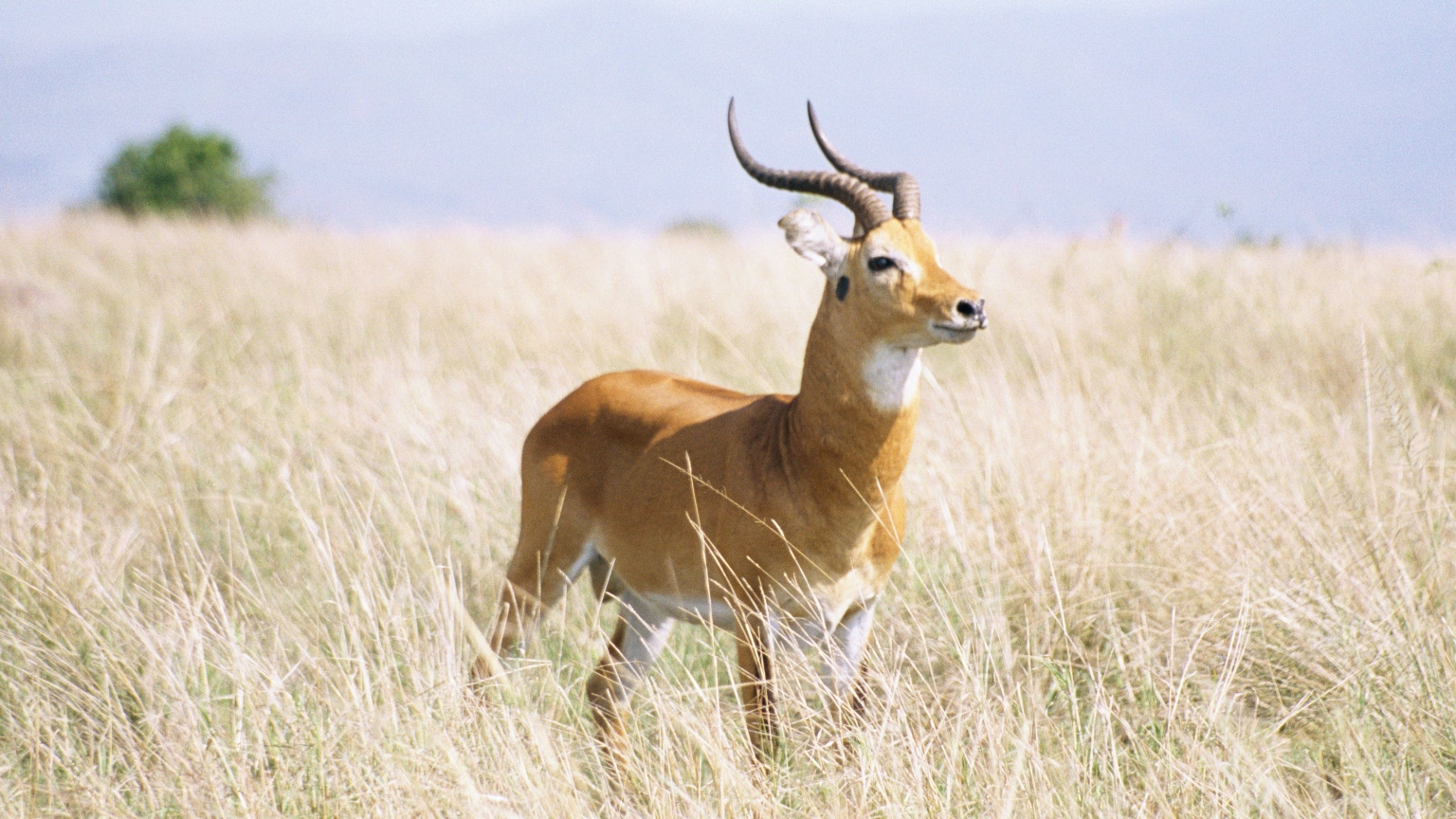- Kob
Taxobox
name = Kob
status = LR/cd | status_system = IUCN2.3
status_ref= [IUCN2006|assessors=Antelope Specialist Group|year=1996|id=11036|title=Kobus kob|downloaded=10 May 2006]
trend = down

image_width = 250px
regnum =Animal ia
phylum = Chordata
classis =Mammal ia
ordo =Artiodactyla
familia =Bovidae
genus = "Kobus"
species = "K. kob"
binomial = "Kobus kob"
binomial_authority = (Erxleben,1777 )The Kob ("Kobus kob") is anantelope found acrossSub-Saharan Africa fromSenegal toSudan . Found along the NorthernSavanna , often seen inMurchison Falls andQueen Elizabeth National Park ,Uganda ;Garamba andVirunga National Park ,Democratic Republic of the Congo , as well as grassy floodplains ofSouthern Sudan [cite web
publisher =ThinkQuest library
url = http://library.thinkquest.org/16645/wildlife/kob_antelope.shtml
title = Kob Antelope: Kobus kob
accessdate = 2007-06-16] .Kob stand 70 to 100 centimetres at the shoulder and weigh from 80 to 100 kilograms. Their backs are an orange-red colour, which lightens to white on the undersides and legs. There are white rings around the eyes and a black stripe down the legs. The short ringed horns, found only in males, are around 50 centimetres in length and arch out slightly so that they are somewhat 'S' shaped in profile.
Kob are found in wet areas (such as
floodplain s) where they eatgrass . Kob are diurnal, but inactive during the heat of the day. They live in groups of either females and calves or just males. These groups generally range from five to forty animals.Among the Kobs of Eastern Africa, the
Ugandan Kob ("Kobus kob thomasi") appears on thecoat of arms of Uganda , and the White-eared Kob ("Kobus kob leucotis"), found inSudan andEthiopia , participate in large-scale migrations.Migration
The 1500km migration of up to a million White-eared Kob in
southern Sudan each year rivals that of the great herds of theSerengeti cite web
title = White-eared kob ("Kobus kob")
publisher =BBC
url = http://www.bbc.co.uk/nature/wildfacts/factfiles/3114.shtml] . Following the massive displacements of the 25-year Sudan war (ceasefire: Jan 2005), it was thought that the kob may be largely reduced, but they were observed in huge herds in January 2007::Seeing thousands upon thousands upon thousands of white-eared kob streaming under the aircraft, day after day, was like I had died and was having the most unbelievable dream you could ever have. -J. Michael Fay ,National Geographic [cite web
title = Massive Animal Herds Flourishing Despite Sudan War, Survey Reveals
publisher =National Geographic
url = http://news.nationalgeographic.com/news/2007/06/070611-sudan-animals.html Jan 2007 aerial survey covering in war-tornsouthern Sudan . Team leader: J. Michael Fay,Wildlife Conservation Society biologist and National Geographic explorer-in-residence] Indeed, it is possible that the herds have flourished better than usual with less human intervention.Males are territorial and in some areas are found patrolling circular territories less than thirty metres across surrounded by other males guarding similar territories, these groups of territories are called "leks" and rarely contain more than fifteen animals. The male patrols the border of his territory whistling loudly and may only hold the territory for a week before moving on, typically with several other members of the lek.
Reproduction
Females reach sexual maturity at 13 months and males at around 18 months; at this point, male sub-adults usually leave the group and stake out territory in a lek. One young is born after a gestation period of 7.5-9 months. While births may occur throughout the year, in drought-prone areas there is a peak at the end of the rains (September-December).
After birth, the young lie concealed for about six weeks; after which time, they follow their mothers. They are weaned after about 6-7 months.cite web
title = White-eared kob ("Kobus kob")
publisher =BBC
url = http://www.bbc.co.uk/nature/wildfacts/factfiles/3114.shtml]Behavior
The behavior of the kob has been an influential example in the development of the field of
ethology .Robert Ardrey cites several key behaviors (based on research by Helmut K. Buechner at Washington State University [cite book
last = Ardrey
first = Robert
authorlink = Robert Ardrey
title = The Territorial Imperative
publisher = Atheneum
year = 1966
location = New York
pages = 390 ] ):
*Male kobs compete for territory, never for females.
*On a kob stamping ground (called a "lek" by later researchers), the "proprietor" of the territory almost always wins any fight.
*The psychological advantage of the proprietor reduces the incidence and severity of actual fighting.
*Antagonism between male kobs is confined to the stamping ground.
*Copulation occurs nowhere but on the stamping ground.
*Populations of kob do not mix.
*"Attachment to a piece of ground is stronger than to the female herd."References
External links
* [http://www.awf.org/wildlives/145 Kob: Wildlife summary from the African Wildlife Foundation]
Wikimedia Foundation. 2010.
